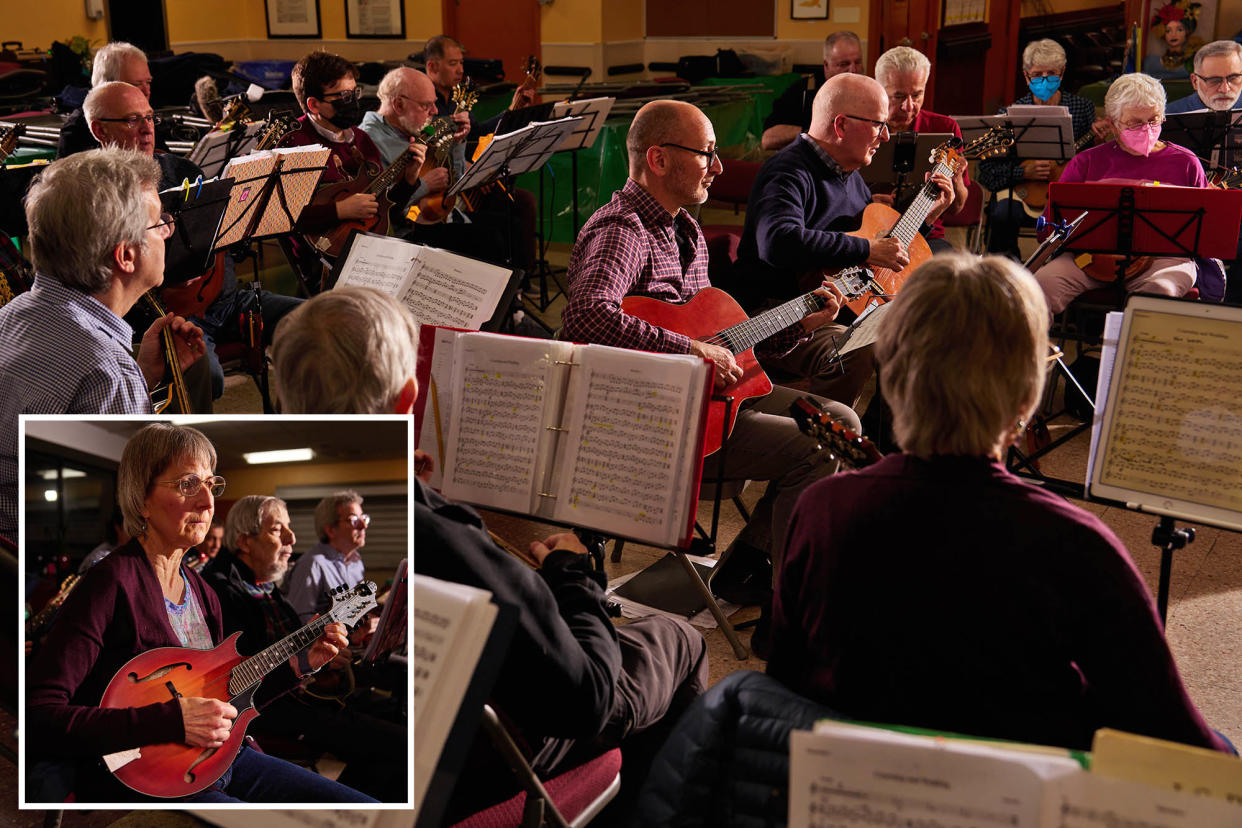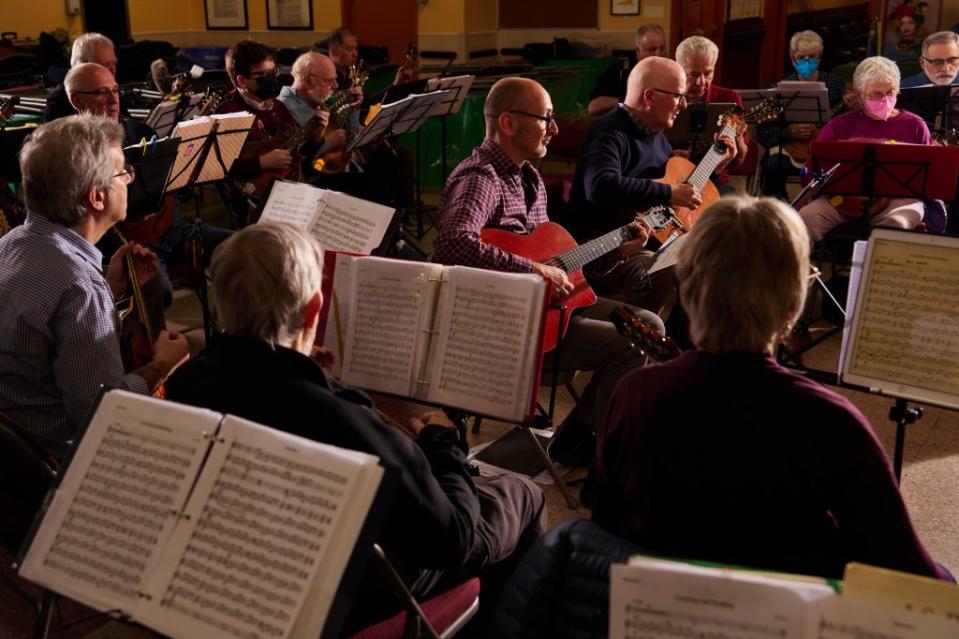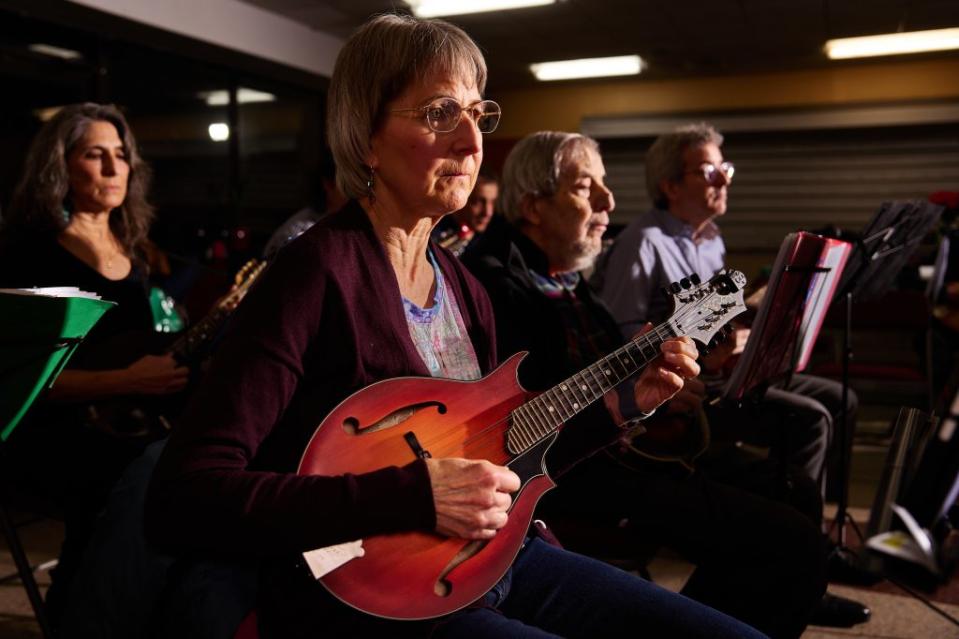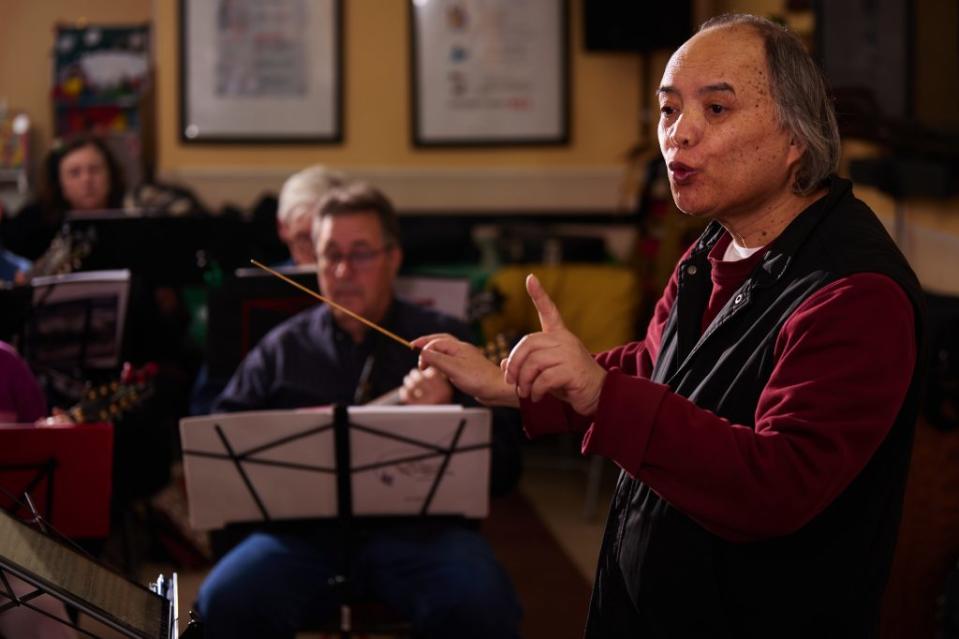NY Mandolin Orchestra celebrates 100 years of community connection through music

The New York Mandolin Orchestra turns 100 next month, marking a century of bringing people together over their shared love of making music and fostering community.
“I think this is an extraordinary moment for us as an organization,” says Carol Bloom, 80, a retired teacher and guidance counselor from the Upper West Side who plays second mandolin in the orchestra.
The plucky group, made up of a mix of professional and amateur musicians, gather to rehearse once a week and hone their craft while practicing songs like “Ukrainian Melody,” “Bulgar,” and “Flatbush Waltz.”

Founded in 1924, and originally called the New York Freiheit Mandolin Orchestra, after its affiliation with the Jewish community newspaper Freiheit, the NY Mandolin Orchestra’s founding members were Eastern European immigrants who had carefully toted their instruments on their journeys to the New World.
“The orchestra really had a very strong influence from Eastern European immigrants, and largely a Jewish influence, too,” said Judith Fallat, 67, a full-time attorney from Morris Plains, NJ and the group’s concertmaster.
“If you think back to 100 years, these people are working in factories,” said Fallat, who joined the orchestra in 1997. “They get off work and blow off steam, and gather and play the music of their homelands and dance and be together. That’s what they would do at night.”
Today the orchestra’s membership runs the gamut of backgrounds, with members from all five boroughs of New York, as well as Nassau, Orange, Duchess and Rockland Counties, and all over New Jersey.
Its members include composers, lawyers and doctors, as well as school teachers and painters — nearly all at or near retirement age.
In the 1920s, the Big Apple boasted numerous mandolin orchestras, many affiliated with labor unions, including the International Ladies Garment Workers Union Orchestra, the International Workers Order Mandolin Orchestra and the Jewish Peoples’ Fraternal Order Orchestra.
By the 1980s, membership was skewing older, and musicians from disbanded groups began joining the ranks of the New York Mandolin Orchestra.

Around that same time, the group expanded its oeuvre to include genres like bluegrass, jazz, show tunes, folk and world music.
Over the decades, most of its peers dwindled, but the NY Mandolin Orchestra has stood strong, and is today one of the oldest continuously performing mandolin orchestras in the country.
“Like any organism, it’s gone through its changes. It’s certainly not what it was 100 years ago. It’s evolved over the years,” said Bloom, who joined the group nearly a decade ago.
“But somehow it’s still the orchestra, the New York Mandolin Orchestra.”
Throughout its 100 years in existence, the orchestra only shut down performances once. As a result of the pandemic. live rehearsals were suspended through the fall of 2021.
At any other time, you could set your watch by the group’s Tuesday night rehearsals.
The comfort of that consistency is one thing that has kept Harvey Weitzner, 70, of Mahwah NJ coming back week after week since 1986, making him the group’s longest-standing member.
“We rehearse on Tuesday nights, and it means I forget all the aggravation and all the stress,” the retired second-generation music store owner told The Post.
“It’s such a supportive group of people. Great people. A lot of people in the orchestra were my parents’ generation and older. One of our ex-members is over 100 years old.”

Orchestra member Michael Resnick, 88, a Brooklyn-born retired orthopedic surgeon who now lives in Suffern, NY, joined the group in 2012 after a chance meeting with Weitzner in his music store.
He admits to being completely self-taught, but has mandolin in his blood — his father learning to play mandolin on the streets of Brooklyn, he said.
Resnick has three kids, six grandchildren and four great-great-grandchildren. Recently, his son Andrew, 59, joined the orchestra.
“It’s a great thrill to play with him,” Resnick beamed.
“I feel I owe the orchestra a great debt because I didn’t have a musical education. I learned that being able to play with other people is one of the best things in life,” he said, leaning on his cane.
“I think it’s an incredible thing that an organization can last 100 years. I think that the people in it were very, very devoted.”
The orchestra’s conductor is Dr. Yuanlin Chen, 67, a renowned composer from Kew Gardens Hills whose works have been performed at major concerts around the world.
He described the group as “wonderful” and hailed their stylistic evolution over its 100-year history.
“I enjoy it. It’s very exciting working with the musicians.”
The New York Mandolin Orchestra is hosting a Centennial Celebration Concert on Sunday, April 28 at 2 p.m. at the Church of the Holy Trinity, 316 East 88th St.
Doors open at 1:30 p.m., and the orchestra will perform from 2 to 4 p.m. with one intermission. Admission is free.

 Yahoo News
Yahoo News 
